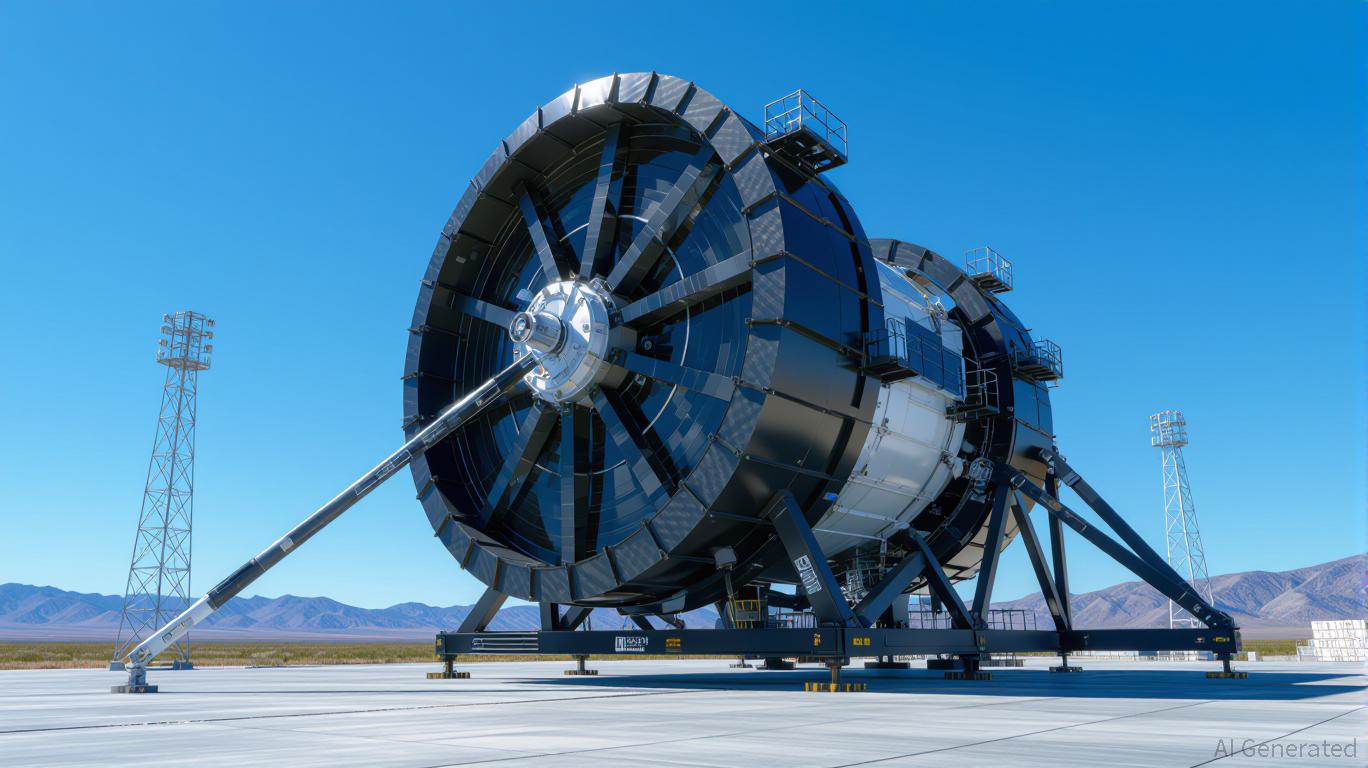
The aerospace industry is on the cusp of a seismic shift, driven by startups like SpinLaunch, which are redefining the economics of satellite deployment. In August 2025, SpinLaunch secured a $30 million funding round led by ATW Partners and Kongsberg Defence & Aerospace, a move that underscores the growing confidence in its disruptive kinetic launch system. This capital infusion is not just a vote of confidence in SpinLaunch’s technology but a signal of a broader transformation in the space sector: the rise of low-cost, high-frequency launch solutions that threaten to upend traditional rocket-based models.
The Kinetic Disruption: Cost, Scalability, and Sustainability
SpinLaunch’s core innovation lies in its ground-based centrifuge system, which accelerates satellites to hypersonic speeds (up to 8,000 km/h) before a secondary propulsion stage completes orbit insertion. This approach eliminates 75% of fuel costs and reduces carbon emissions by 90% compared to traditional rockets. The economic implications are staggering: SpinLaunch projects a cost-per-kilogram range of $1,250–$2,500 for Low Earth Orbit (LEO) missions, a 4–10x reduction relative to SpaceX’s Falcon 9 ($6,000/kg) and Rocket Lab’s Electron ($25,000/kg).
These cost advantages are not theoretical. SpinLaunch has already validated its system through 10 suborbital tests, demonstrating the ability to withstand extreme G-forces (10,000–20,000 Gs) and proving the durability of its satellites. The company’s 100-meter Orbital Accelerator in Alaska, expected to be operational by 2027, will be the first true test of its orbital capabilities. If successful, SpinLaunch could achieve daily launches of 5–10 satellites, a cadence unmatched by traditional providers. This scalability is critical for industries like broadband, Earth observation, and IoT, where constellations require frequent, affordable deployments.
Strategic Partnerships and the Meridian Space Constellation
SpinLaunch’s $30 million raise is being directed toward two key initiatives: the commercial rollout of its Meridian Space satellite constellation and the expansion of its go-to-market infrastructure. The Meridian constellation, built in partnership with Kongsberg NanoAvionics under a $135 million contract, will deliver broadband services to enterprise and government clients. This vertical integration—where SpinLaunch designs, builds, and launches its own satellites—creates a closed-loop ecosystem that amplifies its cost advantages.
The company’s strategic alignment with Kongsberg, a leader in defense and aerospace, also signals a shift in institutional capital flows. Defense-driven investments are increasingly prioritizing dual-use technologies, and SpinLaunch’s secure, low-cost satellite communications align with national security goals. This trend is evident in the U.S. Space Force’s 2024 Commercial Space Strategy, which emphasizes leveraging private-sector innovation for resilient space infrastructure.
The Broader Ecosystem: Institutional Capital and Aerospace Startups
SpinLaunch’s rise is part of a larger wave of institutional investment in the low-cost launch ecosystem. In Q3 2025, aerospace startups raised over $1.2 billion globally, with venture capital firms, corporate VCs, and government-backed programs targeting scalable solutions. For example, Varda Space Industries secured $187 million to advance in-space pharmaceutical manufacturing, while Astranis raised $200 million to expand its satellite broadband network.
Institutional investors are drawn to startups that address the “access to space” bottleneck. SpinLaunch’s kinetic system, with its potential to reduce launch costs by an order of magnitude, fits this mold. However, the sector remains risk-averse, favoring companies with clear revenue paths and proven technology. SpinLaunch’s partnership with Kongsberg NanoAvionics and its $30 million raise position it as a strong contender, but challenges remain. The company must navigate technical hurdles in its orbital testing and secure additional funding to scale operations.
Investment Implications: A New Paradigm in Space Access
For investors, SpinLaunch represents a high-conviction opportunity in a sector poised for exponential growth. The global satellite launch market is projected to expand at a 12% CAGR through 2030, driven by demand for LEO broadband, Earth observation, and IoT. SpinLaunch’s cost structure and environmental benefits align with ESG-focused portfolios, while its strategic partnerships with defense and aerospace giants reduce downside risk.
However, the path to profitability is not without obstacles. Traditional rocket providers like SpaceX are developing fully reusable systems (e.g., Starship) that could further compress launch costs. Additionally, SpinLaunch’s reliance on a single, unproven technology (its kinetic system) introduces execution risk. Investors must weigh these factors against the company’s first-mover advantage and the growing urgency for sustainable, scalable launch solutions.
Conclusion: A Launchpad for the Future
SpinLaunch’s $30 million raise is more than a funding milestone—it is a harbinger of a new era in aerospace. By rethinking the physics of launch, the company is challenging the status quo and offering a blueprint for a future where space access is democratized, affordable, and sustainable. For investors, the key question is not whether SpinLaunch will succeed, but whether it can scale its technology before traditional players adapt. In a sector defined by rapid innovation, SpinLaunch’s kinetic leap may prove to be the most disruptive yet.
